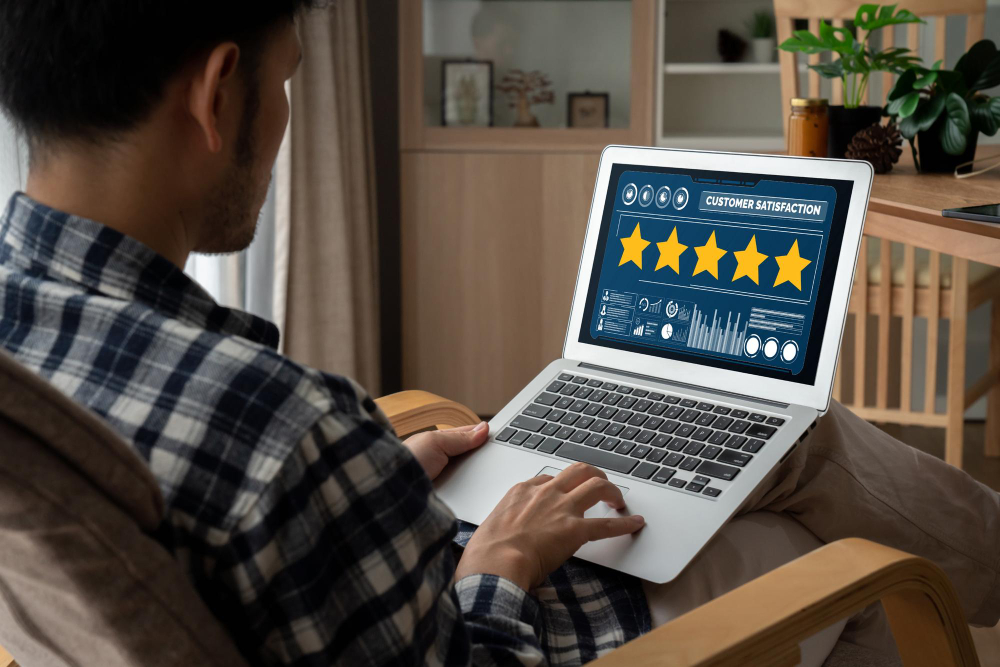Do you want to find out what your customers are saying online about your company?
Are you having trouble identifying brand emotion in online discussions?
The reputation of brands is significantly impacted by social media and online discussions. According to a survey by Hootsuite, 90% of organizations are using social to build brand awareness; 77% to manage their brand reputation; 71% for building and managing an engaged community; 61% to increase lead conversions and sales.
Potential customers’ decisions may be influenced by what current customers say about your company online. To learn more about how your consumers feel about your brand, it is essential to monitor and measure online dialogues.
Expert tips to measure online success of your brand –
In this article, we’ll go over some suggestions for accurately measuring online conversation and monitoring brand opinion.
Tips to Measure Online Conversations to Track Brand Sentiment
Define Your Goals
It’s important to establish your objectives before you begin monitoring online interactions. What are you hoping to accomplish by monitoring brand sentiment? Do you want to raise consumer happiness, keep an eye on brand reputation, or assess the effectiveness of a campaign? You may successfully monitor online interactions by selecting the appropriate tools and metrics by clearly defining your objectives.
Some of the sample goals could be
- A leading financial advisor may want to monitor daily buzz to respond to any negativity before they become viral
- An NGO may decide to engage with online influencers to drive advocacy on its behalf
- A Food and Beverage leader might want to measure online sentiments to track its reputation
- A Job Portal might want to track employee perceptions to advise institutions on hiring strategies
- A Pharma major might have a goal of understanding patient needs and their adherence to drug regimes
- A technology provider might want to identify customer service alerts
Identify Emerging Trends
Online discussions may be a useful resource for learning about new trends and problems affecting a company or sector. CX specialists may learn how to utilize social listening techniques to spot new concerns and trends, then use this knowledge to outperform the competition and raise customer happiness.
For instance, CX specialists for an e-commerce site might spot new trends and problems that can have an influence on their company by utilizing social listening technologies to track online discussions about their items. They may keep tabs on what clients are saying about their goods, what they like and don’t like, and what issues they are having. By using this data, CX specialists may outperform their rivals by promptly resolving any concerns and raising customer happiness. They may also utilize this information to create new services or products that cater to the evolving demands of their clients, enhancing their bottom line.
A collaboration between a London shopping center and an AI software company created The Trending Store; a one-stop-shop for hot 100 styles trending on social media. The shop uses Augmented AI to predict trends from 400,000 global influencers before it happens.
Myntra follows a three-phase data-driven approach to determine the right discounts specific to product category and how the spending patterns change and get impacted by the discounts and thereby prescribe optimal discounts. The optimization is based on balancing inventory, sustainable margins, and seller-level restrictions to generate discounts accordingly.
Use Hashtags
The use of hashtags on social media platforms may be a useful tool for monitoring brand sentiment. Customers might be encouraged to utilize branded hashtags you’ve created for your campaigns while discussing their experiences. You will find it simpler to follow and keep an eye on brand-related discussions as a result.
Take the example of a fashion firm that wishes to monitor Instagram brand sentiment. You may incite your consumers to use a branded hashtag, such #MyFashionBrandStyle, while posting pictures of themselves wearing your products on social media. You may measure engagement rates, find brand evangelists, and determine good and negative feelings about your brand by keeping an eye on this hashtag.
You may get in touch with an influencer, for instance, if you see that they often use your brand’s hashtag and get a lot of interaction, and you might be able to work together on a sponsored post or campaign. On the other side, if you find criticism of your company on the hashtag, you may look into the situation and, if required, take remedial action. On social media sites like Instagram, hashtags may be used to gauge online discussions and track brand sentiment.
Analyze Customer Feedback
When evaluating online interactions, customer reviews are a useful source of data. You can gain insight into customer attitudes and find opportunities for improvement by analyzing customer feedback. Online surveys, polls on social media, and reviews may all be used to gather input from customers.
For example, a clothing retailer could use customer feedback surveys to gather insights into its customers’ preferences and identify areas for improvement in its product offerings and customer service. You can predict shoppers’ returns before items are purchased. Retailers can pop checks to avoid returns. Feedback analysis can summarise the reason for return to create an automated prediction engine.
Monitor Online Reviews
Online reviews are an important predictor of how customers feel about your business. While bad reviews might hurt your brand’s image, positive reviews can help it. Therefore, it’s essential to keep an eye on online ratings and reviews and reply to customer comments right away.
For example, a restaurant chain could use online review platforms to monitor customer feedback and respond to negative reviews. By addressing customer concerns and improving its service, the restaurant chain can improve its brand reputation and attract new customers. Restaurant reviews are written on food portals such as Zomato. Feedback could be on fulfilment, packaging, quality, and pricing.
The chain could also analyze reviews on competitors to know what’s working for them or learn from their mistakes. For example, a food chain was serving food without the customer’s permission creating dissonance. Another feedback was that certain dish was served only after 1930 hrs. After Food, People are the most important touchpoint. “Food is good!! But the waiters on the top floor are terrible. The way they take orders from us, we don’t even feel like ordering anything”. Touchpoint is not on delivery, service, price, or food quality but each dish itself becomes a touchpoint in terms of quality and price “Ordered for a tail-free prawn and they got the reverse of that”.
Leverage UGC to Improve Brand Sentiment
The emotion that consumers have toward a brand may be significantly improved with the use of user-generated content (UGC). CX specialists should investigate ways to find and make use of user-generated content in order to increase customer happiness, create brand recognition, and monitor brand sentiment.
An example of how customer experience experts may use user-generated content to increase overall brand perception for a clothing firm would look something like this:
CX experts may collect user-generated material to exhibit on their website and social media platforms by encouraging consumers to upload images of themselves using the brand’s products on social media and tagging the official account of the company. This not only generates a feeling of community and increases engagement with the business, but it also offers prospective consumers with social proof, which is an advantage. Additionally, customer experience specialists are able to handle any negative feedback and transform it into a pleasant experience for the consumer, thereby enhancing brand sentiment. This is accomplished by monitoring and reacting to customer comments and reviews on social media.

Track Your Competitors
Monitoring your competition may provide you with valuable insights into the industry you work in and help you locate areas where you can improve. You may watch the online discussions of your rivals and follow the sentiments they have about their brands by using social listening technologies. In addition to this, you may investigate the social media plans and campaigns of competitors in order to learn from their successes and better your own methods.
A software corporation, for instance, can make use of social listening techniques in order to keep tabs on the product offers and consumer feedback provided by its rivals.
As you can see, monitoring online conversations and gauging consumer attitudes about a business may give very useful information regarding the customer experience. Are you interested in learning more about how to put these techniques to work for your own brand? Do you want to get more information about the use of social listening technologies or the utilization of user-generated content?
If you are interested in more insights on measuring online conversations, we invite you to attend our upcoming webinar, ‘Bridging the insight gap from CX touchpoints to brand health and sales.’ Register now to gain valuable insights and actionable tips.







